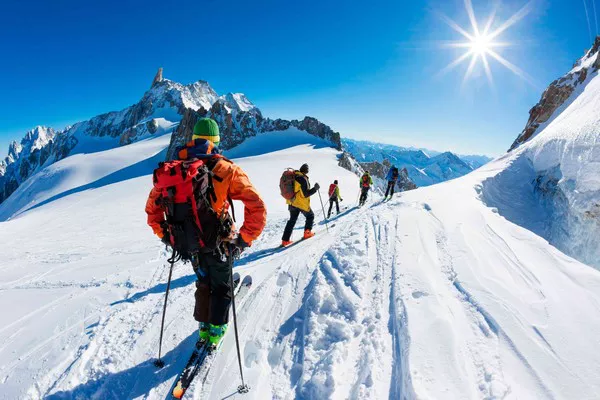Cross-country skiing and downhill skiing represent two distinct disciplines within the realm of winter sports, each offering its own set of challenges and rewards. While downhill skiing often garners more attention for its adrenaline-pumping descents and picturesque mountain vistas, cross-country skiing provides a unique experience that appeals to a different set of enthusiasts. In this comprehensive analysis, we delve into the intricacies of both disciplines, exploring the question: Is cross-country skiing easier than downhill?
Understanding the Fundamentals
Before delving into the comparison, it’s essential to grasp the fundamentals of each discipline. Downhill skiing typically involves descending slopes with the aid of gravity, using specialized equipment such as alpine skis, boots, and bindings. Skiers navigate down groomed trails or off-piste terrain, relying on their technique and equipment to control their speed and direction.
On the other hand, cross-country skiing, also known as Nordic skiing, encompasses various techniques, including classic and skate skiing. Unlike downhill skiing, cross-country skiing emphasizes forward propulsion using poles and skis. Skiers traverse diverse terrain, including flat tracks, rolling hills, and challenging inclines, requiring a blend of endurance, strength, and technique.
The Physical Demands
One of the fundamental differences between cross-country skiing and downhill skiing lies in the physical demands placed on participants. While both disciplines offer excellent cardiovascular workouts, they target different muscle groups and energy systems.
Cross-country skiing engages a wide range of muscles, including the quadriceps, hamstrings, glutes, core, and upper body. The continuous motion of propelling oneself forward demands significant endurance and stamina. Additionally, the varied terrain and techniques involved in cross-country skiing contribute to a full-body workout, enhancing balance, coordination, and agility.
Conversely, downhill skiing primarily targets the lower body muscles, particularly the quadriceps, calves, and glutes, as skiers maintain control and absorb shocks while descending. While downhill skiing requires bursts of power and agility, it generally involves shorter periods of sustained effort compared to cross-country skiing.
Skill and Technique
Another aspect to consider is the skill and technique required for each discipline. Downhill skiing often appears more intimidating to beginners due to the higher speeds and steeper gradients involved. However, with proper instruction and practice, novice skiers can quickly gain confidence and proficiency on the slopes.
Cross-country skiing, while less daunting for beginners, presents its own set of technical challenges. Mastering the various techniques, such as diagonal stride in classic skiing or skating technique in skate skiing, requires time and dedication. Furthermore, navigating different types of snow conditions and terrains demands adaptability and finesse.
Accessibility and Cost
When comparing cross-country skiing to downhill skiing, accessibility and cost play significant roles. Cross-country skiing typically offers greater accessibility, as it can be practiced in various locations, including groomed trails, parks, and backcountry areas. Unlike downhill skiing, which often requires access to ski resorts and lift tickets, cross-country skiing can be enjoyed in more affordable settings, such as local trails or public parks.
In terms of equipment costs, cross-country skiing tends to be more budget-friendly for beginners. A basic set of cross-country skis, boots, and poles can be purchased at a fraction of the cost of downhill skiing equipment. Additionally, cross-country ski passes or trail fees are generally lower than lift tickets at ski resorts, making it a more economical option for enthusiasts seeking outdoor recreation during the winter months.
Environmental Impact
In an era where environmental sustainability is a growing concern, the ecological footprint of recreational activities cannot be overlooked. Cross-country skiing often has a smaller environmental impact compared to downhill skiing. With its reliance on human-powered locomotion and minimal infrastructure requirements, cross-country skiing promotes a closer connection to nature while minimizing carbon emissions associated with transportation and resort operations.
Downhill skiing, by contrast, entails the development of ski resorts with extensive infrastructure, including chairlifts, snowmaking systems, and grooming equipment. While these amenities enhance the skiing experience, they also contribute to habitat fragmentation, resource consumption, and greenhouse gas emissions.
Conclusion
In conclusion, the question of whether cross-country skiing is easier than downhill skiing does not have a straightforward answer. Both disciplines offer unique experiences and cater to different preferences and fitness
levels. While cross-country skiing may be perceived as less daunting for beginners and more accessible in terms of cost and environmental impact, it requires a significant investment of time and effort to master its techniques and skills.
Conversely, downhill skiing offers the thrill of speed and adrenaline-inducing descents but often comes with higher costs and environmental considerations. Ultimately, the choice between cross-country skiing and downhill skiing boils down to individual preferences, fitness goals, and the desire to explore the winter landscape in its various forms. Whether gliding through serene forests on cross-country trails or carving turns down steep mountain slopes, both disciplines offer unparalleled opportunities for outdoor adventure and enjoyment.

